Keeping a clean and hygienic environment is essential for any office space. It not only promotes employee health and productivity but also contributes to the overall image of the business. One effective way to ensure regular cleaning and sanitizing is by implementing an office sanitizing schedule.
This article will explore the importance of such a schedule, provide tips for creating and implementing one, and offer examples of successful office sanitizing schedules.
What is an Office Sanitizing Schedule?
An office sanitizing schedule is a document that outlines the specific tasks and frequency of cleaning and sanitizing activities that need to be carried out in an office space. It serves as a guide for employees and cleaning staff to ensure that all areas of the office are properly cleaned and maintained.
The schedule can include tasks such as cleaning and disinfecting surfaces, vacuuming and mopping floors, sanitizing shared equipment, and restocking essential supplies. By having a clear and organized schedule, everyone in the office can contribute to maintaining a clean and hygienic environment.
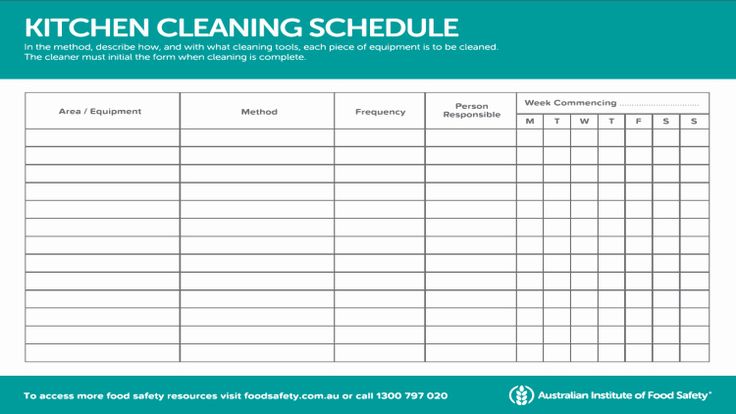
Why is an Office Sanitizing Schedule Important?
An office sanitizing schedule is important for several reasons:
- Promotes employee health: Regular cleaning and sanitizing help prevent the spread of germs and reduce the risk of illnesses among employees. This, in turn, leads to a healthier and more productive workforce.
- Enhances productivity: A clean and organized workspace can significantly improve productivity. When employees are not distracted by clutter or concerned about the cleanliness of their surroundings, they can focus better on their tasks.
- Creates a positive image: A well-maintained office reflects positively on the business. It gives the impression that the company values cleanliness and cares about the well-being of its employees and clients.
- Establishes accountability: With an office sanitizing schedule, everyone in the office knows their responsibilities and can be held accountable for their assigned tasks. This ensures that cleaning and sanitizing activities are not overlooked or neglected.
How to Create an Office Sanitizing Schedule
Creating an office sanitizing schedule involves several steps:
1. Assess the cleaning needs
Start by assessing the cleaning and sanitizing needs of your office. Consider the size of the space, the number of employees, and the specific tasks that need to be performed regularly. This will help you determine the frequency and scope of cleaning activities.
2. Identify high-touch areas
High-touch areas are surfaces and objects that are frequently touched by multiple people, such as doorknobs, light switches, desks, and shared equipment. Identify these areas in your office and prioritize their cleaning and sanitizing.
3. Determine the cleaning schedule
Decide how often different areas and tasks need to be cleaned and sanitized. Consider factors such as foot traffic, the nature of the work being done, and any specific hygiene requirements. For example, high-traffic areas may require daily cleaning, while less frequently used spaces may only need to be cleaned weekly.
4. Assign responsibilities
Allocate cleaning tasks to specific individuals or teams. Communicate these responsibilities and ensure that everyone understands their role in maintaining a clean and hygienic office environment. Consider rotating the responsibilities to distribute the workload and promote a sense of shared ownership.
5. Create the schedule
Using a template or spreadsheet, create an office sanitizing schedule that includes the tasks, frequency, and responsible parties. Make sure the schedule is clear and easy to understand. Consider using color-coding or visual cues to make it more visually appealing and user-friendly.
6. Display the schedule
Print out copies of the schedule and display them in prominent locations throughout the office. This will serve as a reminder for everyone to adhere to the cleaning and sanitizing schedule. Consider placing copies in common areas, near shared equipment, and in restrooms.
Examples of Successful Office Sanitizing Schedules
Here are a few examples of successful office sanitizing schedules:
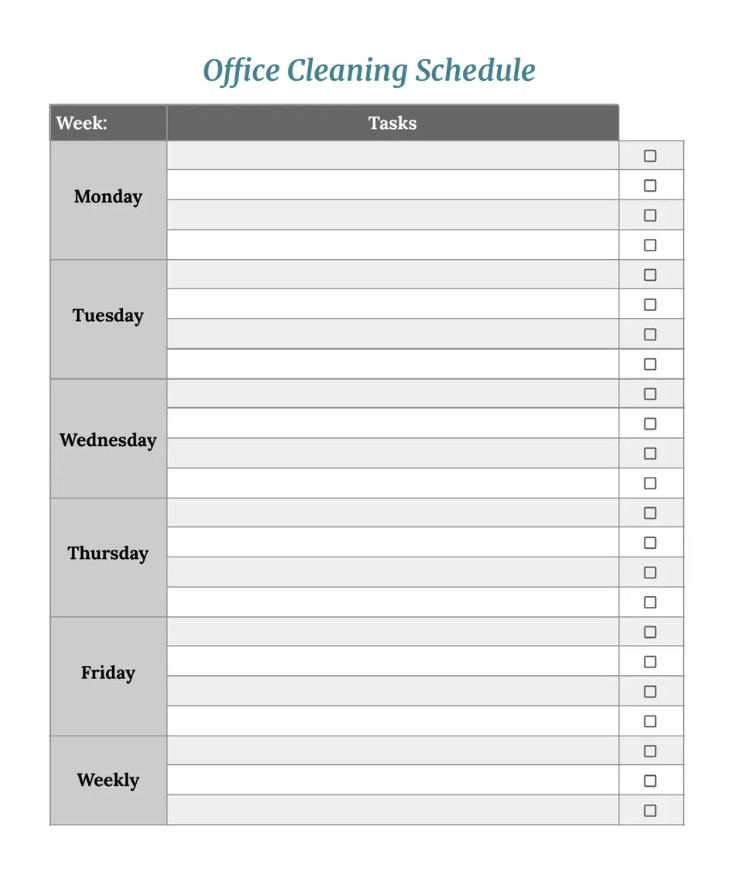
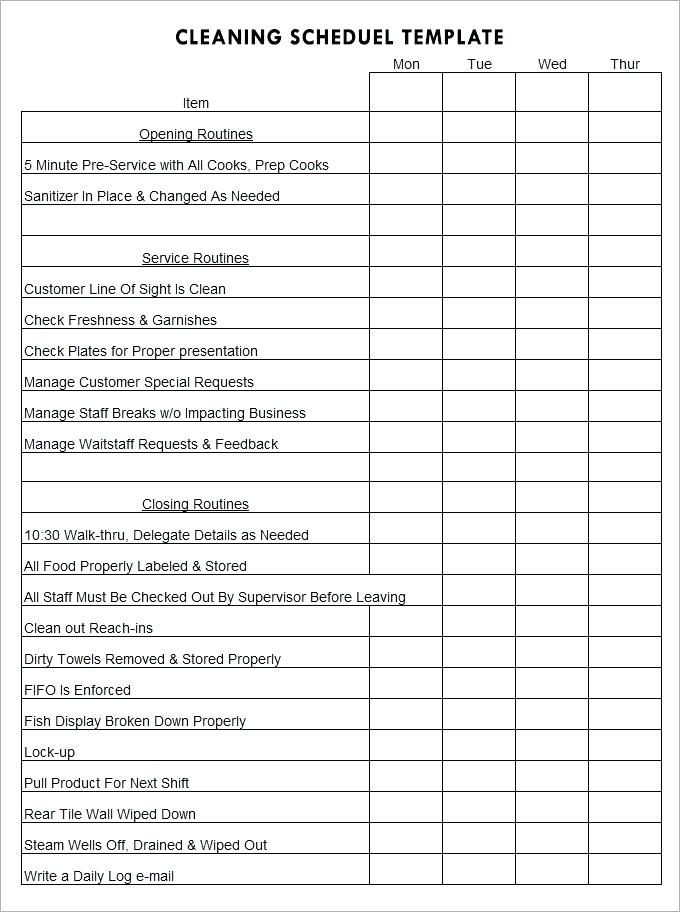
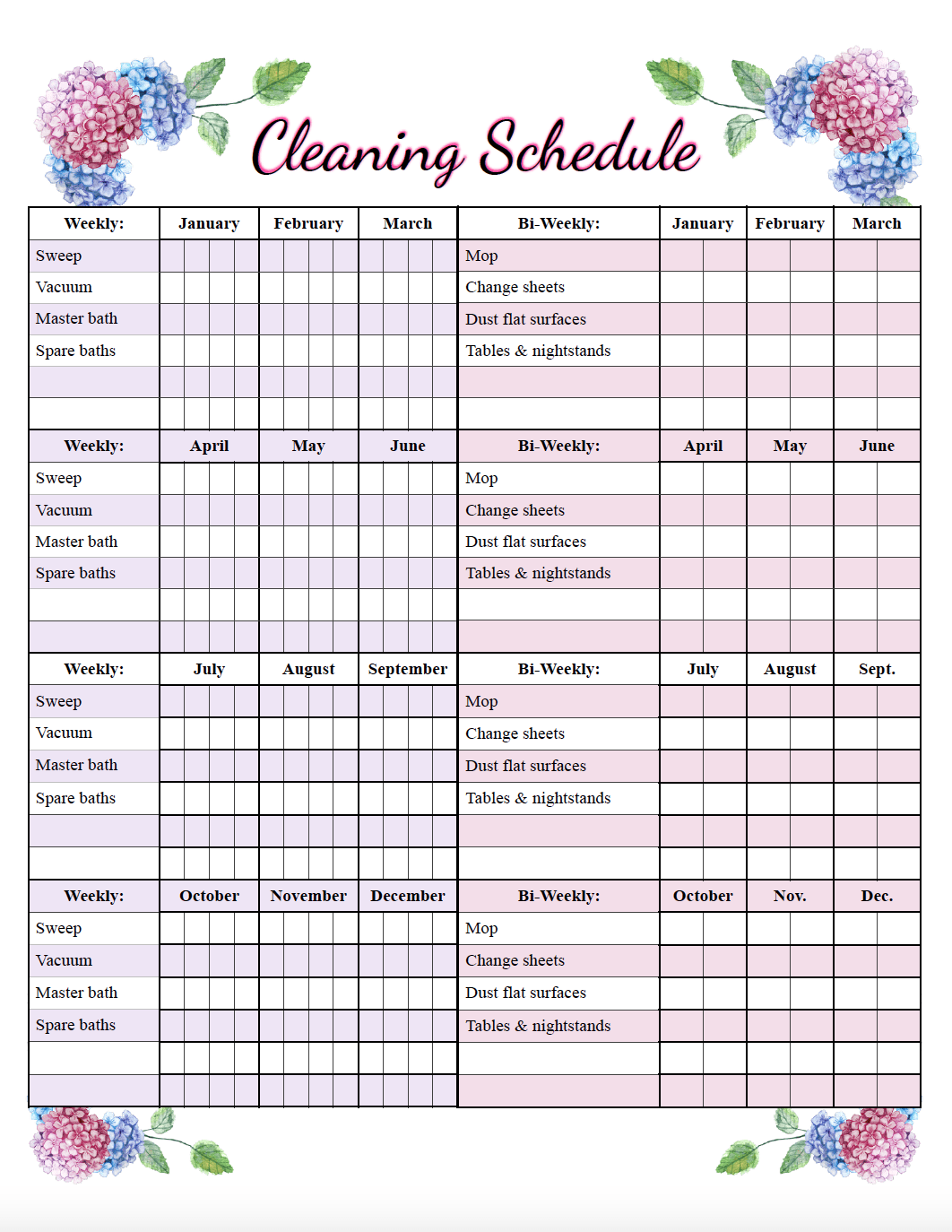
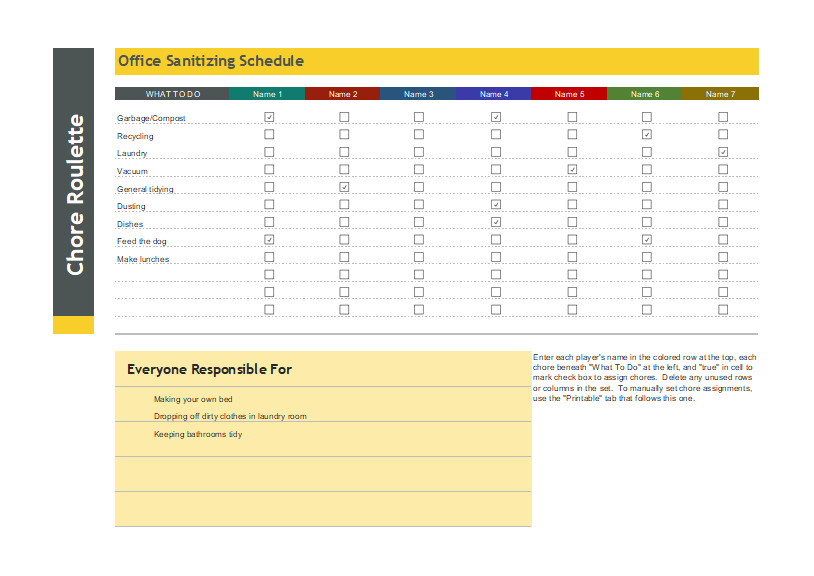
Tips for Successful Office Sanitizing
Here are some tips to ensure the success of your office sanitizing efforts:
- Provide training: Educate employees on proper cleaning and sanitizing techniques to ensure effective and safe practices.
- Use appropriate cleaning products: Select cleaning products that are effective against germs and viruses, and follow the instructions for use.
- Encourage personal hygiene: Promote good hand hygiene among employees by providing hand sanitizers and reminding them to wash their hands regularly.
- Regularly review and update the schedule: As the needs of your office change, periodically review and update the sanitizing schedule to ensure it remains effective.
- Seek feedback: Regularly solicit feedback from employees and cleaning staff to identify any areas that may require additional attention or improvement.
- Lead by example: Managers and supervisors should lead by example and actively participate in the cleaning and sanitizing efforts.
By implementing a office sanitizing schedule and following these tips, you can create a clean and hygienic environment that promotes employee health, productivity, and the overall image of your business.
Office Sanitizing Schedule Template – Download